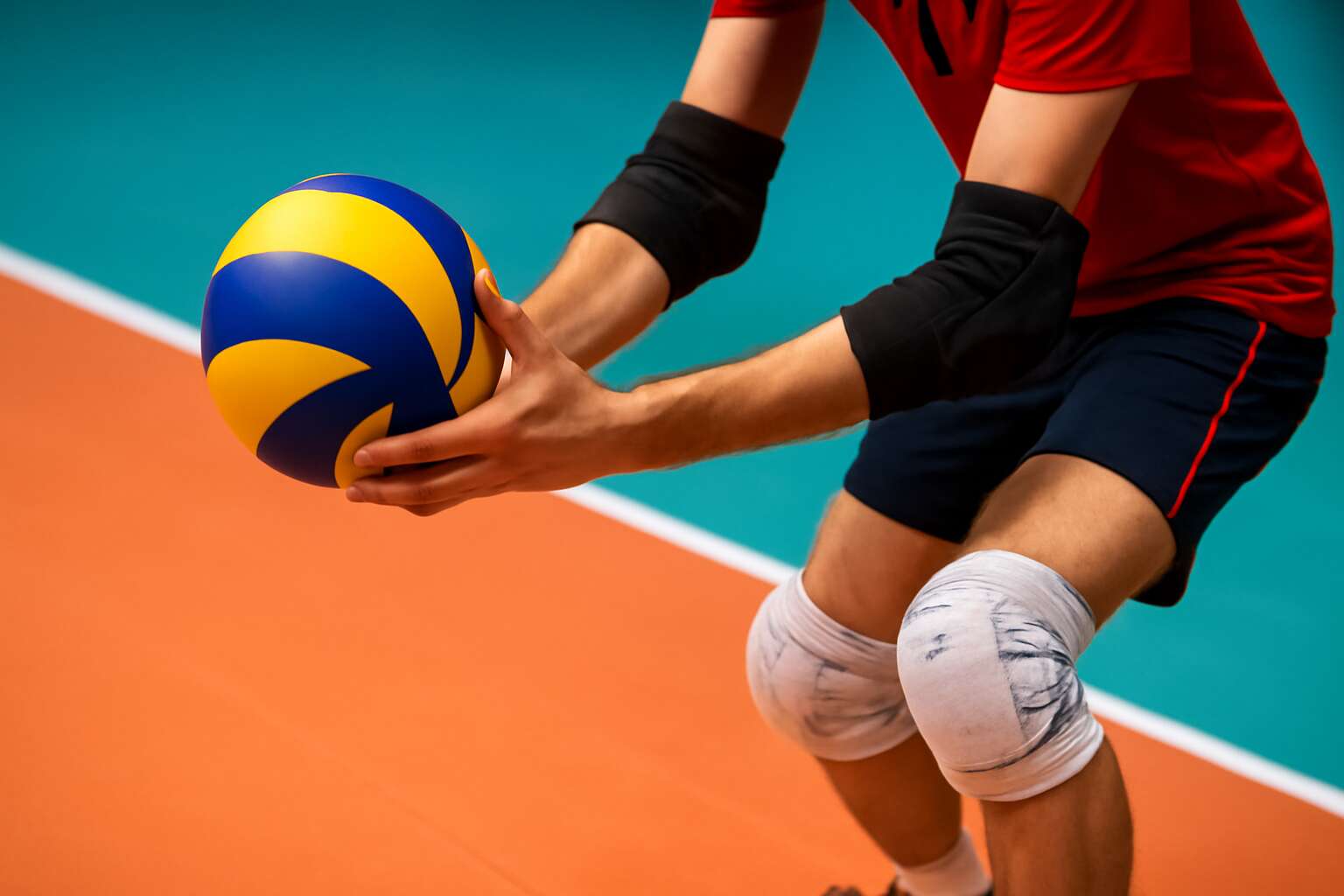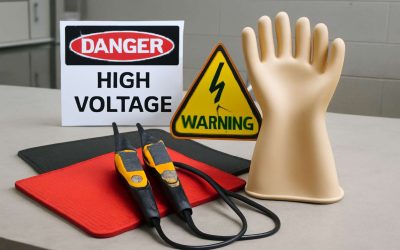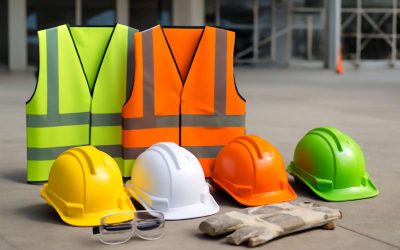Overview of Volleyball Safety Equipment
Importance of Safety in Volleyball
In the fast-paced world of volleyball, where spike power and quick reflexes reign supreme, overlooking safety equipment used in volleyball is a gamble that no player should take. Recent studies reveal that injuries are surprisingly common, with ankle sprains and finger fractures topping the list. That’s where proper safety gear becomes the unsung hero of the game, transforming potential disasters into minor inconveniences.
While the game demands agility and precision, safety in volleyball hinges on more than just skill; it’s about safeguarding your body with the right protective gear. Think of it as a secret weapon—disguised as knee pads, elbow sleeves, and specialised volleyball shoes—that keeps players on the court and off the sidelines with injuries. Ensuring each piece of safety equipment used in volleyball is up to standard isn’t just smart; it’s essential for longevity in the sport.
Understanding the importance of safety in volleyball isn’t merely about avoiding the occasional bruise. It’s about prioritising player well-being, preventing serious injuries, and maintaining peak performance. After all, no one wants to spend more time icing their knees than enjoying the game! By integrating high-quality safety equipment used in volleyball, players can focus on their game, confident that their safety is well taken care of.
Common Injuries in Volleyball and Prevention
Volleyball may seem like a graceful dance on the court, but beneath the surface lies a battlefield of unpredictable impacts and sudden movements. Injuries are more common than many realise, with ankle sprains, finger fractures, and knee strains leading the charge. These accidents often strike when players leap for a spike or dive for a loose ball, catching even the most skilled off guard. Proper safety equipment used in volleyball acts as an invisible shield—absorbing shocks and reducing the severity of injuries.
Preventive measures are crucial; understanding common injuries helps in selecting the right safety gear. For example, ankle braces and specialised volleyball shoes can prevent sprains, while padded knee supports minimise damage from frequent dives. Incorporating safety equipment used in volleyball isn’t just about protection—it’s about maintaining the athlete’s edge and extending their career. Remember, the right gear isn’t optional; it’s a vital part of the game’s armoury.
Role of Safety Equipment in Injury Prevention
In the high-stakes world of volleyball, the role of safety equipment used in volleyball cannot be overstated. This gear acts as an invisible guardian, transforming the athlete’s body into a fortress against unpredictable impacts. When players launch into powerful spikes or dive headlong for a loose ball, safety equipment absorbs shock and disperses energy—reducing the risk of catastrophic injuries.
Effective safety equipment used in volleyball includes a variety of specialised gear designed to protect vulnerable joints and bones. For instance, ankle braces and padded knee supports are essential for preventing sprains and strains during rapid directional changes or dives. Moreover, volleyball shoes with non-slip soles and reinforced toes provide stability and minimise the chances of slips or toe injuries. Incorporating this equipment into your game isn’t just a precaution; it’s a strategic move to maintain peak performance and prolong your athletic career.
Protective Gear for Volleyball Players
Knee Pads – Array
In the high-stakes world of volleyball, where explosive jumps and rapid dives are routine, knee pads stand as silent guardians—protecting the very foundation of a player’s agility. These pieces of safety equipment used in volleyball aren’t just accessories; they are essential armour that shields players from the relentless impact of falls and dives. Scientifically designed to absorb shock and reduce abrasions, high-quality knee pads can mean the difference between a quick recovery and a season-ending injury.
What truly sets effective knee pads apart is their construction—combining durability with flexibility, allowing athletes to move freely without sacrificing protection. For those serious about their game, choosing the right knee pads involves considering factors like padding thickness, breathability, and fit. Remember, the best safety equipment used in volleyball doesn’t just prevent injuries; it empowers players to perform with confidence, knowing they’re protected from the unseen threats lurking beneath every powerful spike or desperate save.
Elbow Pads – Array
In the intricate ballet of volleyball, where swift manoeuvres and relentless agility define the game, protective gear becomes the silent sentinel guarding the athlete’s artistry. Among these, elbow pads emerge as vital components of the safety equipment used in volleyball, providing a resilient shield against the sudden onslaught of falls and scrapes. Their purpose transcends mere protection; they empower players to execute daring moves with confidence, knowing that their limbs are safeguarded from the harsh impact of the court.
Crafted from high-density foam and reinforced with durable fabrics, elbow pads are designed to absorb shock while maintaining flexibility. This delicate balance ensures that players can dive, spike, and defend without hesitation. For those seeking peak performance, understanding the nuances of safety equipment used in volleyball—such as padding thickness, ventilation, and ergonomic fit—is essential. When worn correctly, elbow pads are more than just protective gear; they are an extension of the athlete’s resolve, transforming potential injuries into mere whispers of the game’s fiercest battles.
Ankle Braces and Supports – Array
In the dynamic realm of volleyball, where agility and precision dance in perfect harmony, the importance of safety equipment used in volleyball cannot be overstated. Among these, ankle braces and supports stand as crucial guardians, providing stability amidst the rapid pivots and jumps that define the sport. Recent studies highlight that ankle injuries constitute nearly 30% of all volleyball-related injuries, underscoring the vital role of proper protective gear.
These supports are crafted from resilient materials designed to restrict unwanted movements while allowing flexibility for swift action. Ankle braces not only prevent sprains but also boost confidence, enabling athletes to perform daring manoeuvres without trepidation. For those seeking optimal protection, understanding the nuances of safety equipment used in volleyball—such as adjustable straps, breathable fabrics, and ergonomic design—becomes essential.
In the grand tapestry of volleyball safety, ankle supports serve as a testament to the sport’s blend of resilience and finesse. They remind us that true mastery comes not just from skill but from safeguarding the body’s most vulnerable joints against the relentless demands of the game.
Wrist Guards and Supports – Array
In the high-octane theatre of volleyball, where every leap and dive tests the limits of human resilience, wrist guards and supports emerge as silent sentinels, guarding against the subtle yet insidious toll of repetitive strain and sudden impact. The intricate ballet of spiking and passing demands not just skill but an unyielding commitment to safeguarding the body’s most vulnerable joints. Recent research reveals that wrist injuries account for a significant portion of volleyball-related ailments, accentuating the importance of quality safety equipment used in volleyball.
Wrist guards, meticulously engineered from durable, breathable materials, serve a dual purpose: stabilising the joint while permitting the agility necessary for rapid play. They are crafted with adjustable straps, ensuring a custom fit that reduces unwanted movement while still allowing for the finesse required on the court. For athletes seeking comprehensive protection, understanding the nuanced design of safety equipment used in volleyball—such as ergonomic contours and moisture-wicking fabrics—becomes essential.
Furthermore, supports for the wrists can be categorised into:
- Rigid braces that provide maximum immobilisation for acute injuries
- Compression sleeves that promote blood flow and reduce fatigue
In this delicate interplay of resilience and finesse, wrist guards and supports exemplify the meticulous attention to safety that elevates volleyball from mere sport to a disciplined art form. They embody the realisation that mastery is as much about protection as it is about prowess—an unspoken affirmation that resilience begins with safeguarding the intricate architecture of the human body amidst relentless athletic demands.
Additional Safety Equipment
Volleyball Shoes with Good Traction – Array
In the shadowy realm of volleyball, where agility and precision dance on a knife’s edge, the importance of safety equipment used in volleyball cannot be overstated. Among the myriad of protective gear, volleyball shoes with good traction stand as silent guardians, anchoring players to the court amidst the chaos of airborne dives and lightning-fast cuts. These shoes are crafted to grip the surface with unwavering resolve, ensuring every jump and landing is a calculated act rather than a reckless gamble.
Good traction in volleyball shoes prevents slips that could turn a spectacular spike into a catastrophic fall. It’s not merely about comfort but about preserving the integrity of the athlete’s body — a crucial aspect of safety equipment used in volleyball. The sole design often features specialised patterns and durable rubber compounds, offering stability on a variety of court surfaces.
For those seeking to elevate their safety measures, consider the following features in volleyball shoes with good traction:
- Enhanced grip for quick lateral movements
- Shock absorption to lessen impact injuries
- Lightweight construction for agility and speed
Mouthguards – Array
Amidst the exhilarating chaos of volleyball, where every leap and dive is a ballet of agility, safety equipment used in volleyball extends beyond mere protection—it becomes a shield of confidence. One often overlooked yet vital piece of this armour is the mouthguard. Designed to cushion impacts and prevent dental injuries, these customisable protectors are a silent guardian during fierce rallies and rapid collisions.
Wearing a mouthguard not only safeguards your teeth but also reduces the risk of jaw injuries, allowing players to focus entirely on their game without fear of accidental trauma. For those who crave extra security, some mouthguards incorporate shock-absorbing materials that mould perfectly to the athlete’s mouth, providing a customised fit. It’s a small addition with a mighty impact—transforming safety equipment used in volleyball into an essential component of a player’s armoury.
In the grand arena of volleyball safety, a well-chosen mouthguard complements other protective gear, creating a comprehensive barrier against unforeseen injuries. The true magic lies in its simplicity—an unobtrusive yet powerful piece of safety equipment used in volleyball that can make all the difference in the heat of competition.
Eye Protection – Array
While often overshadowed by knee pads and ankle supports, eye protection is an essential component of safety equipment used in volleyball. The fast-paced nature of the game, with smashes and unpredictable ball trajectories, makes eye injuries a real concern for players at all levels. Protective goggles or sport-specific eyewear can be a game-changer, shielding players from accidental hits that could cause serious damage or even temporary blindness.
High-quality eye protection is designed to fit comfortably without hindering visibility or movement. Materials like polycarbonate lenses offer durability and clarity, ensuring players remain focused on the game rather than worrying about their safety equipment. For those who wear contact lenses or glasses, specialised protective eyewear can prevent dislodgement or injury during intense rallies.
Some brands offer models with anti-fog coatings and adjustable straps, making them versatile and reliable. Incorporating eye protection into the broader spectrum of safety equipment used in volleyball not only prevents injuries but also boosts confidence—players can concentrate solely on their performance without the distraction of potential eye injuries. Ultimately, safeguarding one’s eyesight is just as vital as protecting other critical areas, turning safety equipment into a vital part of a volleyball athlete’s armoury.
Safety Equipment Maintenance and Proper Usage
Regular Inspection and Replacement
Even the most advanced safety equipment used in volleyball can become a liability if neglected. Regular inspection and maintenance are vital to ensure these vital protective tools perform at their peak when it matters most. Over time, wear and tear can compromise the integrity of knee pads, ankle braces, or eye protection, turning a guardian into a risk factor.
A proactive approach involves establishing a routine for checking equipment before every game or practice. Look for frayed straps on ankle supports, cracks in protective gear, or loose fittings that could jeopardise safety. Replacing worn-out items promptly isn’t just about compliance; it’s about safeguarding athletes from avoidable injuries.
Create a simple checklist to streamline the process:
- Examine for physical damage
- Test the fit and comfort
- Replace or repair as necessary
This vigilance ensures that the safety equipment used in volleyball remains a steadfast shield rather than a hidden hazard.
Correct Usage and Fit
Proper maintenance and correct usage of safety equipment used in volleyball are essential for protecting athletes and enhancing performance. Well-maintained gear acts as a dependable barrier against the rigours of the game, but even the best equipment can become ineffective if neglected. Regularly checking for signs of wear, such as frayed straps on ankle supports or cracks in protective gear, is a simple yet vital step in injury prevention.
Ensuring a proper fit is equally important. Ill-fitting knee pads or eye protection can shift during play, reducing their effectiveness and potentially causing discomfort or injury. Athletes should always test the fit before each game or practice, making adjustments as needed. Remember, safety equipment used in volleyball isn’t just about compliance—it’s about customising protection that feels natural and secure, so players can focus on their game without distraction.
- Inspect the gear for physical damage
- Ensure a snug, comfortable fit
- Replace or repair worn or damaged items promptly
This approach guarantees that safety equipment used in volleyball remains a trustworthy shield, allowing players to perform confidently and safely on the court. When safety is prioritised through proper maintenance and correct usage, the risk of injury diminishes, and the game becomes safer and more enjoyable for everyone involved.
Cleaning and Care
In the high-stakes world of competitive volleyball, the safety equipment used in volleyball can be the thin line between a game-winning play and a devastating injury. Proper maintenance and diligent care transform equipment from mere accessories into unwavering shields of protection. Regularly cleaning and inspecting gear ensures it remains effective, preventing unexpected failures when every second counts.
Pay close attention to the durability of your safety equipment used in volleyball. Dust, sweat, and wear can compromise materials over time, making routine cleaning essential. For instance, wiping down knee pads and ankle supports after each session not only prolongs their lifespan but also keeps them hygienic. When signs of damage—such as cracks or frayed seams—appear, replacing or repairing these items becomes vital to uphold safety standards.
- Inspect all safety gear thoroughly before each use.
- Clean equipment with appropriate, non-abrasive products.
- Replace worn or damaged items immediately to maintain optimal protection.
This meticulous approach ensures that the safety equipment used in volleyball remains dependable, safeguarding athletes and boosting confidence on the court. When safety is prioritised through consistent cleaning and proper usage, the game becomes not only more secure but also more exhilarating!
Emerging Trends and Innovations in Volleyball Safety Equipment
Advanced Protective Technologies
As technology continues to evolve, so too does the landscape of safety equipment used in volleyball, leading to groundbreaking innovations that promise to redefine player protection. Advanced protective technologies now incorporate smart materials that adapt dynamically to impact, providing superior shock absorption while maintaining agility. These innovations are not merely enhancements but a paradigm shift—integrating lightweight composites and moisture-wicking fabrics to ensure maximum comfort without compromising safety.
Emerging trends also highlight the integration of wearable tech, offering real-time monitoring of player health and biomechanics. Such innovations enable coaches and players to make data-driven decisions, reducing the risk of overuse injuries and fatigue-related incidents. Additionally, manufacturers are exploring eco-friendly solutions, combining durability with sustainability, aligning safety priorities with environmental consciousness.
In the realm of safety equipment used in volleyball, these developments are paving the way for more personalised and effective protection. From impact-resistant eyewear to smarter padding, the future of volleyball safety equipment is not only more effective but also more aligned with the holistic well-being of athletes.
Smart Safety Gear
Innovations in safety equipment used in volleyball are revolutionising how athletes protect themselves on the court. One of the most exciting developments is the rise of smart safety gear, which seamlessly blends advanced technology with functional design. These innovations offer real-time data on player biomechanics and physical stress, empowering coaches to tailor training and prevent injuries before they happen.
Wearable tech, such as smart pads and impact sensors, are now integrated into safety equipment used in volleyball, providing instant feedback on impact force and muscle fatigue. This not only enhances safety but also optimises performance. For example, impact-resistant eyewear now features embedded sensors that alert players to potential risks, making it a game-changer in injury prevention.
- Real-time health monitoring
- Enhanced impact resistance
- Eco-friendly materials
As the industry shifts towards sustainability, manufacturers are developing eco-conscious safety equipment that maintains durability without sacrificing environmental responsibility. The future of volleyball safety equipment is undeniably smarter, more personalised, and more attuned to the holistic well-being of athletes, promising safer games and longer careers for players at all levels.
Custom-Fitted Equipment
Emerging trends in volleyball safety equipment are transforming how athletes protect themselves while elevating their game. Custom-fitted equipment is at the forefront of this revolution, offering tailored solutions that maximise both safety and comfort. No longer are one-size-fits-all pads adequate; instead, innovative manufacturers are leveraging advanced scanning technology to create personalised safety equipment used in volleyball, ensuring a precise fit that enhances mobility and reduces injury risk.
One particularly exciting development is the integration of adaptive materials that mould to an athlete’s unique anatomy, providing superior impact absorption without compromising agility. These innovations allow players to move confidently across the court, knowing their safety gear offers optimal protection. Moreover, the rise of eco-friendly manufacturing processes ensures that these custom-fitted products are sustainable, aligning performance with environmental consciousness.
To stay ahead in safety innovation, some companies now employ 3D printing techniques to rapidly produce bespoke safety equipment used in volleyball, making customised protection accessible for all levels of play. As the industry continues to evolve, the focus remains on merging personalised fit with cutting-edge technology, creating a new standard for safety equipment used in volleyball—one that champions both player well-being and sustainable practices.
Safety Equipment for Different Volleyball Levels
Indoor Volleyball
When stepping onto the court at any level of indoor volleyball, safety equipment used in volleyball becomes your most loyal partner in the game. From recreational courts to professional arenas, the right gear can turn a risky spike into a safe slam dunk. For beginners, simple essentials like knee pads and ankle supports offer immediate protection against the inevitable tumbles and slips. Advanced players, however, often invest in custom-fitted safety equipment used in volleyball, which provides tailored comfort and maximum impact absorption.
Knowing what to wear isn’t just about avoiding injuries; it’s about playing with confidence. The safety equipment used in volleyball varies with skill level, but the common denominator remains: it’s designed to keep you injury-free so you can focus on your game, not on whether your ankle will give out. Whether it’s mouthguards for teeth protection or eye protection for those wild serves, every item enhances safety and elevates your performance.
Beach Volleyball
When it comes to beach volleyball, the terrain adds a layer of unpredictability that demands specialised safety equipment used in volleyball. Sand, while forgiving, can disguise hazards and cause slips or ankle twists. For this reason, players often rely on ankle braces and supports tailored specifically for outdoor courts. These aren’t just accessories; they’re vital guardians that allow for swift lateral movements without fear of injury. Additionally, wearing protective eyewear can shield against sand particles and unexpected impacts from wild serves, turning a potentially hazardous moment into a confident play.
For enthusiasts and seasoned athletes alike, the choice of safety equipment used in volleyball varies with the environment and skill level. On the beach, lightweight, breathable gear ensures comfort without sacrificing protection. The right safety equipment acts not only as an injury barrier but also as a catalyst for players to push their limits with confidence, transforming the game into a dance of agility and precision under the sun’s watchful gaze.
Professional and Competitive Play
When it comes to professional and competitive volleyball, the stakes are higher, and so is the need for top-tier safety equipment used in volleyball. Elite athletes understand that their game hinges not just on skill but on the confidence that comes from wearing the right safety gear. High-performance knee pads, for example, aren’t just padding—they’re a crucial line of defence against the relentless dives and lunges that define the sport.
For those vying for victory, selecting safety equipment used in volleyball becomes a strategic choice. Custom-fitted gear ensures maximum protection and comfort, reducing the risk of injuries like sprains or strains. Advanced protective technologies, such as moisture-wicking materials and shock-absorbing inserts, are standard in professional-grade equipment. Moreover, wearing ankle braces tailored for high-intensity play supports swift lateral movements that are vital in competitive matches.
In the world of professional volleyball, the right safety equipment used in volleyball transforms hesitation into agility. Whether it’s specialised ankle supports, wrist guards, or reinforced volleyball shoes with superior traction, every piece plays a pivotal role. They don’t just prevent injuries—they empower athletes to push their limits with unwavering confidence, turning each match into a display of precision and resilience.




0 Comments